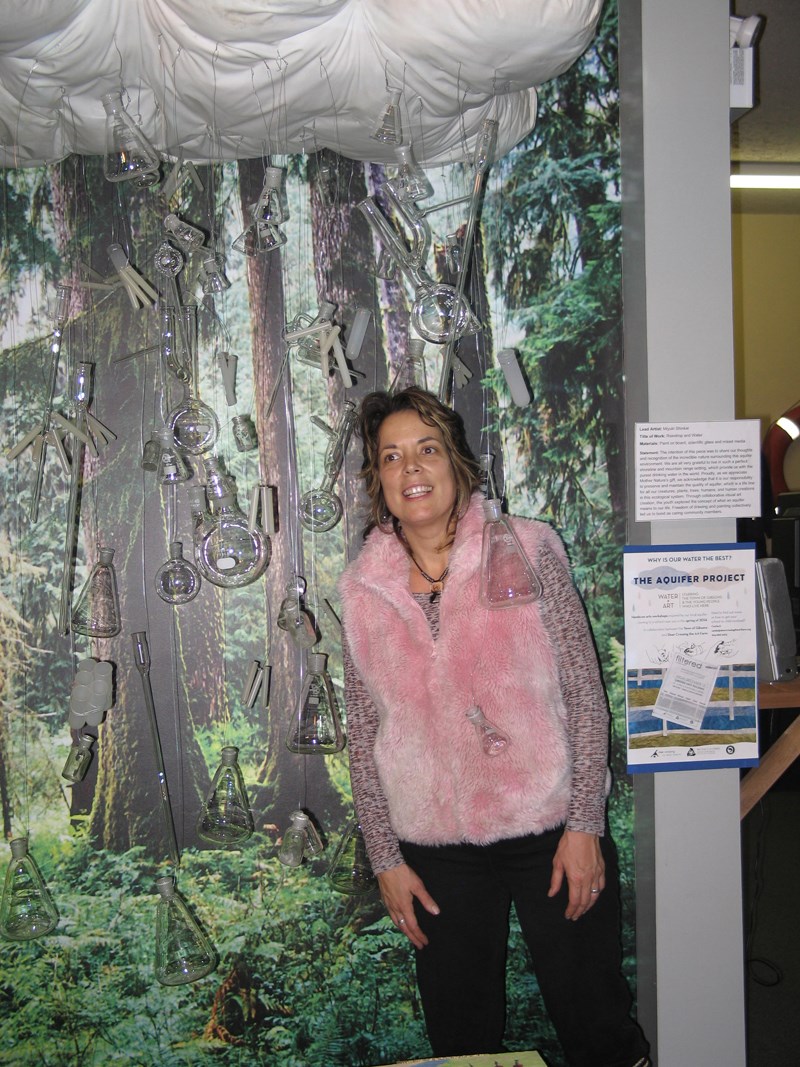Film, sound, wood, paint, clay and words. What do they have to do with the Gibsons aquifer? The creative folks at Deer Crossing, the Art Farm, answered that question on a mini art crawl, called Filtered, in Gibsons on Dec. 12.
Artwork in all those mediums was installed at six locations in Lower Gibsons and the public was invited to tour them, starting at the Arts Building on South Fletcher where the Art Farm’s Chad Hershler gave a short presentation to the families who gathered.
Last summer a team of professional artists held a summer camp for children to explore the idea of the aquifer and render it in artworks of their own creation. The idea was to foster a sense of connection between our community and our drinking water.
“We had about 20 kids and four youth,” Hershler said.
They and the adult artists worked imaginatively; using clay to make small sculptures to be fastened to embellished wooden poles, or mini totems, that then lined a pathway at Holland Park.
Steve Wright’s group of kids made a sound installation, now at the Arts Building, and Wright performed the song that the kids composed during the summer session, We Are Water. He hoped to show the properties of water and how they are affected by sound waves.
Also at the same location, Bronwen Payerle’s viewing fort was installed, a quiet space to watch stop motion animation and claymation.
Artist Kez Sherwood worked with ceramic rings of PVC pipe and concrete with her group, and the result was in the foyer of the Gibsons and District Public Library.
A poetry mural, ink on vellum, with silhouetted flora and fauna, was created by the group that worked with Eilis Carpentier, also at the library. Miyuki Shinkai led a group who painted the terrain under rainfall and hung a glass installation at the Sunshine Coast Museum & Archives that sparkled like raindrops from a cloud.
Sandy Buck of the Art Farm said she was initially inspired by the kids themselves when she organized art programs at several elementary schools.
“I didn’t really know what an aquifer was at first,” she told the families gathered at the Arts Building, “though I knew that the Town of Gibsons had a 500-page report on it.”
Emanuel Machado, administrative officer for Gibsons, was on hand as a representative of the Town, partners on the project with funding from the BC Arts Council. He applauded the artistic effort and said the importance of the aquifer couldn’t have been expressed any better in a long report. The project’s technical advisor, Ginny Cullen, was a geological engineer with the Town. It was obvious that the kids in attendance during the mini art crawl had learned a lot. When Buck asked them: how long does it take a raindrop to filter down through Mount Elphinstone and into the aquifer? Nine years, came the answer.
The Art Farm plans to run the art camp again this summer. For more on the Aquifer project, see www.deercrossingtheartfarm.org/aquifer



